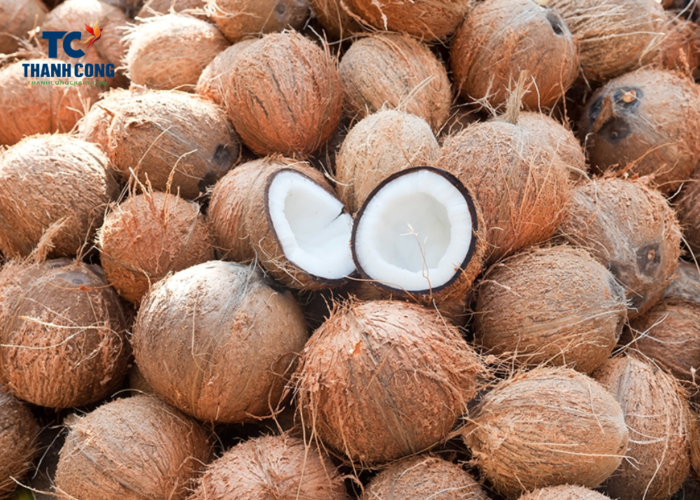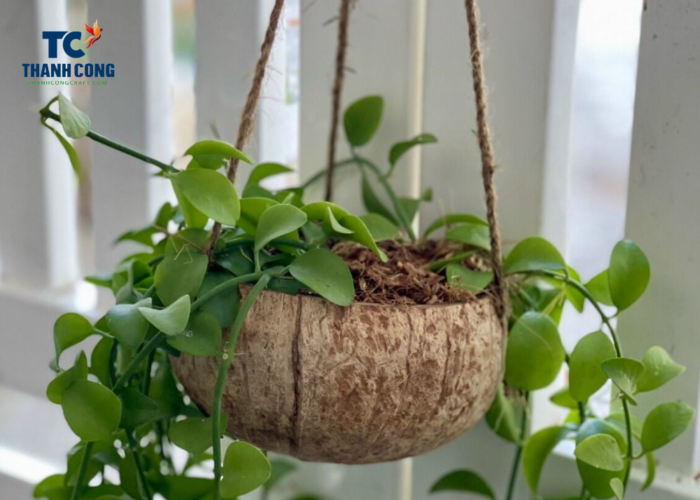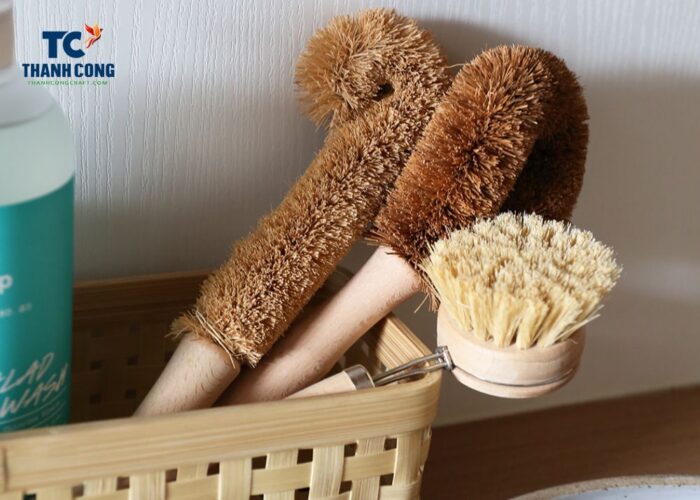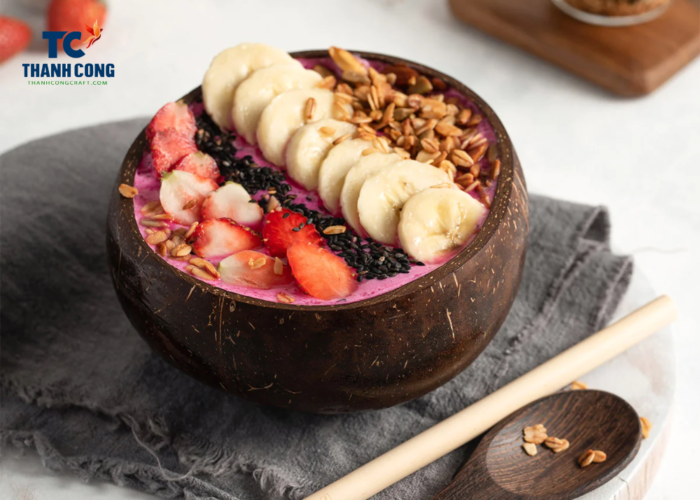If you find yourself wondering what to do with dry coconut, rest assured that this versatile ingredient holds a myriad of culinary possibilities waiting to be unlocked. From enhancing the flavor profile of your dishes to providing a nutritious and satisfying snack, dry coconut is a kitchen essential that often goes underutilized. In this exploration of creative culinary endeavors, we’ll delve into diverse ways to make the most of dry coconut, unlocking its potential to transform your cooking and elevate your dining experiences.
Contents
1. What is dry coconut?
Dry coconut usually refers to desiccated coconut or dried coconut. It is coconut meat that has been granted and dried, either through natural processes or using a dehydrator. This results in a product with a lower moisture content compared to fresh coconut.

Desiccated coconut comes in various forms, including flakes, shreds, or grated coconut. It is commonly used in baking, cooking, and as a topping for various dishes. This dried coconut product retains the rich flavor of coconut and adds a delightful texture to recipes.
It’s important to note that there are also other forms of dried coconut, such as coconut chips or toasted coconut, each offering a unique texture and flavor profile. Desiccated coconut is often used in both sweet and savory dishes, providing a convenient way to incorporate the distinct taste of coconut into a wide range of recipes.Also, dried coconut husk is also utilized in crafting artistic handmade products.
2. What to do with dry coconut
2.1 Dried Coconut Rice
Dried coconut rice is a product obtained from the flesh of coconut after the coconut water has been removed. Typically, it is finely ground and dried, creating small dried coconut rice grains with the distinctive aroma of coconut. Dried coconut rice is often used in cooking, baking, or as a decorative addition to dishes, adding both flavor and nutritional value from the coconut.
2.2 Dried Coconut Husk
Dried coconut husk is the outer protective layer of the coconut after the flesh and water have been separated. Dried coconut husk is commonly utilized in arts and crafts and decoration. The pieces of dried husk can be cut into various shapes and painted to create creative decorative products. Additionally, coconut husk can be recycled to make other items such as baskets, decorative lamps, or various other decor items.
Coconut Husk: Diverse Applications in Manufacturing Various Products
Coconut husk possesses a remarkable versatility, contributing to the creation of a range of essential products for the modern market. Among these products are coco peat, coco husk chips, coco crush, and coir fiber, all derived from the outer shell of the coconut fruit. These materials find applications in manufacturing potting mediums for plant growth, creating doormats, coconut brushes, coconut twine, coconut particle board, sustainable packaging materials, and even mattresses and floor tiles.

Coconut Husk: Beauty and Skincare Applications
In the realm of beauty and skincare, coconut husks find valuable applications as a gentle exfoliant. They aid in the removal of dead cells from the skin’s surface, drawing out impurities and contributing to a cleaner complexion.
Coconut Husk: Cleaning Applications
Coconut husk becomes a fantastic tool for utensil cleaning. When its strands are combined with lemon juice and charcoal powder, they create effective cleaning pads. These eco-friendly scrubbers not only provide comfortable use but also exhibit good water retention, recyclability, and no lingering odors.

Coconut Husk: Harnessing as an Alternative Fuel Source
Conversion of coconut husk into an alternative fuel source offers a sustainable replacement for traditional fuels like wood. Considering the cost-effectiveness and abundance of coconut husks, there is significant potential for utilizing them as a fuel source in power plants.
Coconut Husk: Contributions to Farming and Gardening
With its ability to absorb and consistently deliver nutrients to plants, coconut husk serves as an ideal plant growing medium, particularly for flowering plants like orchids and roses. Its rapid decomposition enriches the soil, promoting healthy plant growth. Coconut husk chips, resembling garden mulch, have gained popularity as a planting medium, offering an alternative to peat to enhance moisture retention and resist fungal growth.
Coconut Husk: Natural Air Freshener
Traditionally employed in many Indian households, coconut husks placed in a brass mug, combined with camphor and ignited, serve as a natural air freshener. This practice not only eliminates odors in the kitchen and home but also acts as a natural mosquito repellent.
2.3 Dried Coconut Shell
The dried coconut shell is the outermost part of the coconut, primarily the brown, hard exterior. When the coconut has undergone the drying process, the coconut shell becomes rigid and maintains the shape of the coconut. Dried coconut shells are often used in arts and crafts to create interior or exterior decorative items. Some people also use dried coconut shells as a natural material for making toys, lids, or other creative and environmentally friendly products.
Coconut Shell Plant Pot
The coconut shell plant pot is a creatively crafted and environmentally friendly product. Made from dried coconut shells, they provide a beautiful and sustainable option for planting. These plant pots ensure not only comfort for the plants but also showcase innovation in recycling and using natural materials.
Coconut Shell Bowl
The coconut shell bowl is a unique culinary product crafted from dried coconut shells. These bowls not only impart a subtle coconut flavor to dishes but also serve as a symbol of creativity in utilizing recycled materials. Coconut shell bowls can be used in daily meals or make for distinctive gifts with their natural appearance and durability.

Coconut Candle
Coconut candles are artistic and decorative products crafted from both coconut flesh and coconut oil. Typically, oil extracted from coconut meat is used to make candles, producing a gentle glow and a mild coconut fragrance. These coconut candles not only provide warm lighting but also create a serene and relaxing coconut-scented atmosphere in your living space.
3. FAQ
3.1 Is dried coconut good?
Yes, dried coconut can be a tasty and nutritious addition to your diet. Dried coconut contains essential nutrients, including healthy fats, fiber, and small amounts of vitamins and minerals. It also provides medium-chain triglycerides (MCTs), a type of fat that is easily absorbed and used for energy. Dried coconut is incredibly versatile and can be used in a variety of dishes. It adds a delightful tropical flavor and texture to both sweet and savory recipes.
3.2 Some uses of dry coconut?
Certainly! Here are some common uses of dry coconut:
- Cooking and Baking: Dry coconut, in the form of shredded coconut, desiccated coconut, or coconut flakes, is often used in both sweet and savory recipes. It adds a rich, tropical flavor and texture to dishes, such as curries, desserts, and baked goods.
- Snacking: Dry coconut can be enjoyed on its own as a delicious and nutritious snack. Coconut chips or flakes make for a satisfying and portable snack option.
- Smoothies and Yogurt Toppings: Sprinkle dry coconut for smoothie bowls or yogurt for added flavor, texture, and a nutritional boost.
- Granola and Cereal: Add dry coconut to homemade granola or sprinkle it over your morning cereal to enhance the flavor and nutritional content.
- Beauty Products: Coconut oil extracted from dry coconut is widely used in skincare and haircare products. It’s known for its moisturizing and nourishing properties.
- Decoration: Dry coconut can be used for decorative purposes, such as topping cakes and desserts, or as a garnish for various dishes.
3.3 How to store dry coconut?
To store dry coconut effectively, follow these guidelines:
- Place the dry coconut in an airtight container to protect it from exposure to air. This helps prevent the coconut from becoming stale and maintains its freshness.
- Store the container in a cool, dark place such as a pantry or cupboard. Exposure to sunlight and heat can lead to the deterioration of the coconut’s quality.
- While it’s not necessary, you can choose to refrigerate dry coconut for extended shelf life. This is particularly useful in warmer climates where the coconut may be more prone to spoilage.
- Periodically check the dry coconut for freshness. If you notice any off smells, changes in color, or signs of mold, discard the coconut.
In conclusion, unlocking the potential of what to do with dry coconut opens up a world of culinary creativity. From infusing exotic flavors into savory dishes to creating delightful sweets and snacks, this versatile ingredient has proven to be an essential and delightful addition to any kitchen.
If you have any further questions, don’t hesitate to send thanhcongcraft an email us at info@thanhcongcraft.com or message us at WhatsApp: +84967485411. Hope to serve you soon! Best regard!












